Meet the Maker: Jody O’Reilly
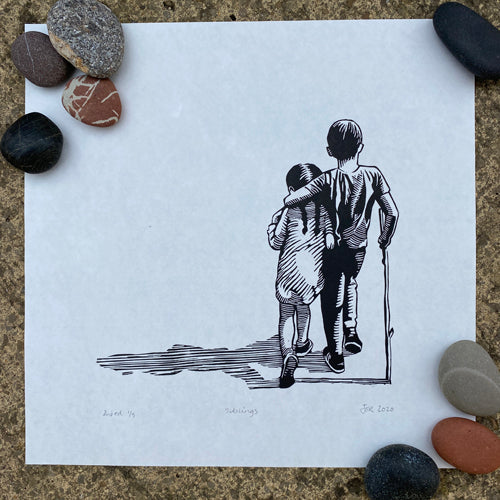
My name is Jody O’Reilly, I live on the edge of the Cotswolds in the Evenlode Valley in Oxfordshire, close to where I grew up. The small town we now live in has lots going on including a busy and active art society; we love where we live. I have two children and a husband who are very tolerant of my filling the house with multiple hobbies and projects and drying prints. My regular job is as a Heritage Consultant for HCUK Group providing advice on the historic environment, particularly listed buildings and conservation areas. My job is amazing and I’m always excited at the opportunities it gives me to see amazing places and help them thrive in the future.
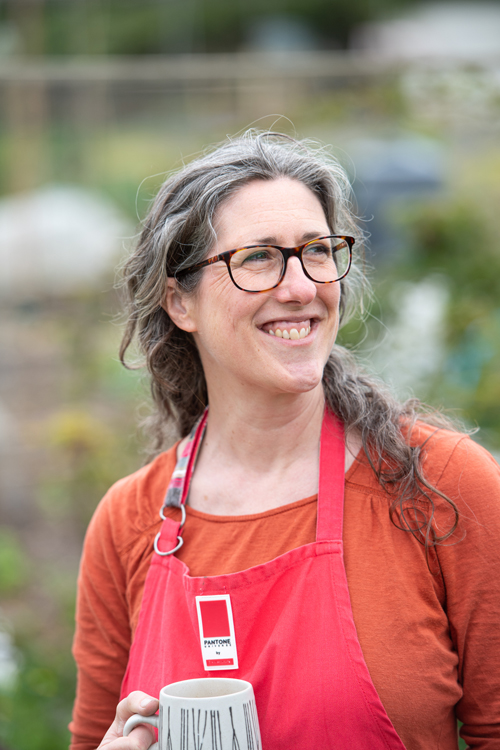
Describe your printmaking process.
I mainly work in lino printmaking and almost always begin with a photograph taken on a walk, a trip with the family, or a day at work. Because I ‘see’ the prints while out and on the go, a photograph enables me quickly capture that moment and also reverse the image easily but flipping an image and perhaps upping the contrast is really the only digital process I use.
When working onto the lino I sometimes transfer directly from the photograph using carbon paper (particularly faces), sometimes I’ll sketch more freely from a photo first to work through tones and composition and then move to the lino. When I began printing regularly I liked using Japanese vinyl as it’s so easy to cut, but more and more I’m shifting back to traditional battleship grey, which if fresh is just as easy and it has that lovely ‘snap’ at the end of any cut.
Carving my plates takes place in short spurts fitted in around everything else in my life; it’s amazing how much can be achieved this way. I don’t usually mark up every cut, but block out the general shape and tone leaving the texture. I do use scraps of lino to test out textures or mark-making as I go if I’m uncertain. I don’t work on a Friday and use these days to print whole editions or layers as I can have a good block of uninterrupted hours. There’s almost always more than one print on the go at any one time, often a long-running reduction print with single colour prints going in tandem.
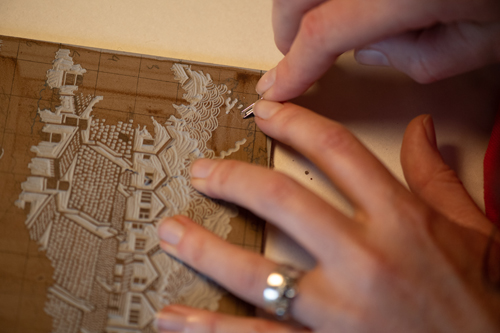
How and where did you learn to print?
I am pretty much self-taught. Art and crafts, making and creating have been part of my life since childhood and have all fed into where I am now which continues to include all sorts of things as well as printmaking – I’ll have a go at almost anything creative and frequently have to rein myself back from beginning another thing. I have done day courses with other printmakers – waiting impatiently through Covid-19 for a reduction course with Laura Boswell. I read printmaking books and blogs and vanish down the rabbit hole of Instagram. If you can avoid succumbing to feeling like you’ll never create anything as amazing as what you find on there, it does have a community of other creatives who are enormously generous with tips or guidance. Mostly, I have just worked away at it myself.
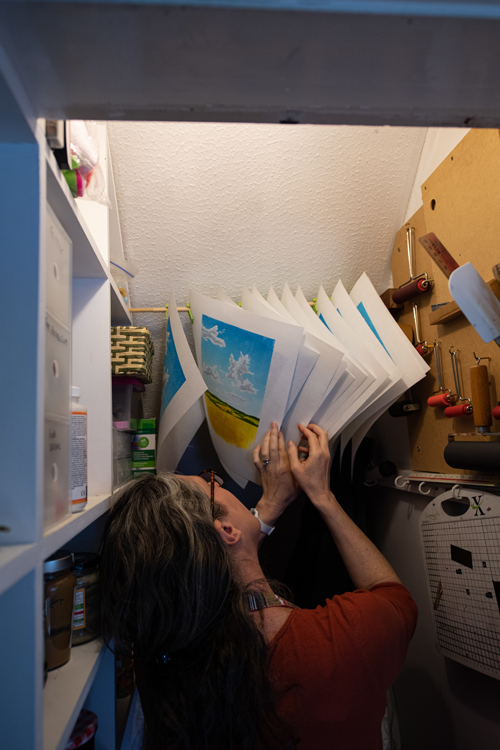
Why printmaking?
I love the transformation that comes from the decisions you make to translate tone and subtle shade into what is fundamentally a simple on or off the mark on the lino, there’s ink or there’s no ink, but it’s possible to achieve amazing subtlety and variation – at least that’s what I try to achieve. My prints are often places that I love and want people to recognise but they’re never hyper-real, I like a slightly reduced graphic quality. I also like the physicality of it, hands, fingers and eye all so closely involved to the exclusion of all else, it’s a meditative process – though it occasionally means I’m late with the school run or supper…
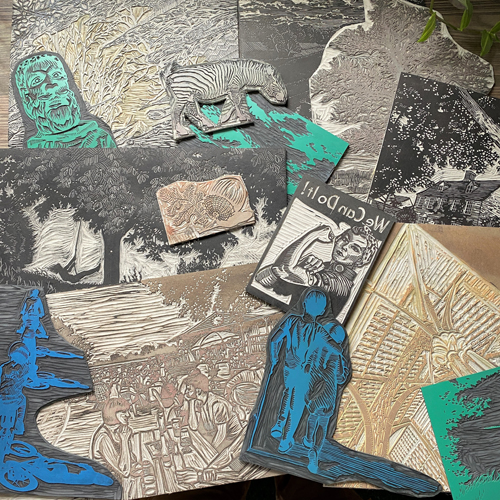
Where do you work?
The lovely thing about lino is that I can work pretty much anywhere… everywhere I walk I ‘see’ possible prints, that tree, the view over there, this flower that burger van, those kids playing… after that it’s almost exclusively my kitchen table alongside my family and everything else. Prints hang to dry under the stairs, with my rollers, or above my work desk, tools, paper, everything else is tucked away where it fits.
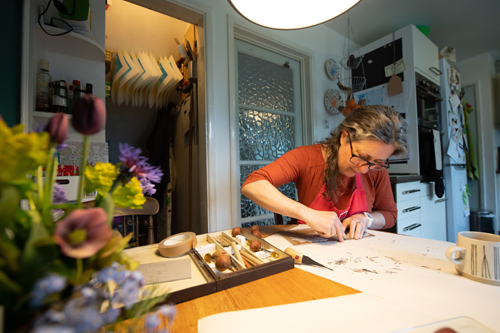
I also now have use of the Charlbury Art Room, a collaborative art space and amazing resource both in terms of space but also shared social opportunities with other creatives. Most excitingly there’s a press there so I can explore other printmaking techniques like drypoint or collagraph – it really is very, very difficult to print these without a press, though I’ve tried.
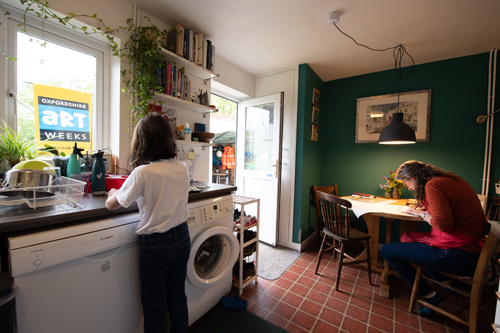
Describe a typical day in your studio.
There’s pretty much no such thing as a ‘typical’ day in my non-existent studio – or rather, a typical day for me includes printmaking alongside all the other things of busy family life, getting my kids out to school, my regular job, cooking, gardening, helping with homework and other things with the kids, stealing time with my husband, DIY, a bit of reluctant tidying or laundry and all the other things. But all the stages of printmaking, thinking, sketching, planning, carving, and even printing are really important creative strands that weave through everything else and give me a great sense of satisfaction and balance.
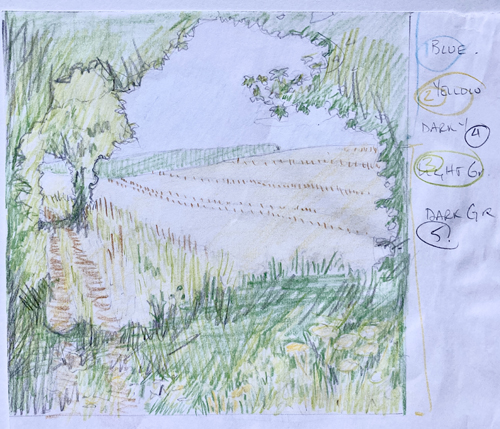
How long have you been printmaking?
I would say ‘properly’ since December 2018 when some local printmakers first persuaded me that I was good enough to exhibit as part of Oxfordshire Artweeks and I signed up and had a massive five-month push to generate enough work to actually show. I did it on an enforced shoestring budget, no new kit other than some decent paper and a few frames to see if I could. I used the funds from my first exhilarating sales to buy some new tools, ink and paper and I’ve never looked back.
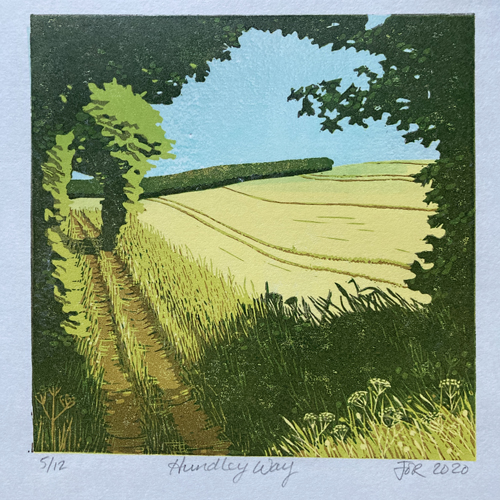
What inspires you?
So so many things from an entire landscape to a moment with my daughter – I mean I printed a Wordle grid the other day to reflect our regular breakfast time activity together… The world out there is so varied and full of miraculous things, or the beautiful everyday little corners that slip by unnoticed until captured. I like to try and record those things. My print images are completed because I love them and because they mean something to me, the fact that anyone else might want to have them is a constant and pleasant surprise to me.
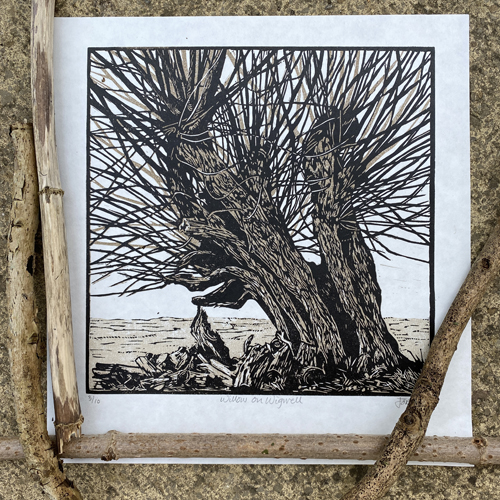
What is your favourite printmaking product?
When I finished my first Artweeks exhibition, I used the money I had made to buy myself the Pfeil cutting tool set, I really really love these. My kids have been carefully schooled in how to safely handle my kit and tools. They periodically have a go at printing and sharp cutting tools lead to fewer slips or skids.
I primarily use Cranfield’s Caligo Safewash inks and HoSho Paper, I have a trusty wooden spoon, one of Thomas Petit’s beautiful glass barens and a Slama press. Printing at home means my kit is safe to wash up in the kitchen sink, fits on my kitchen table, can hang to dry under my stairs and be stored in a compact way at home.
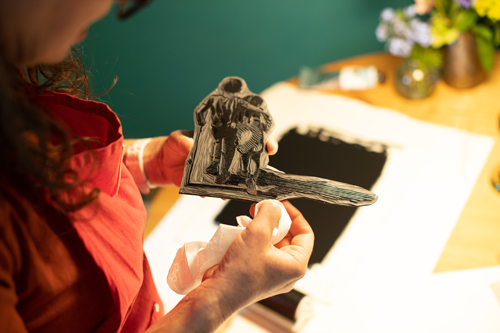
What have you made that you are most proud of?
Two things really… firstly the print of my children Jack and Megan. It’s based on a picture that I snapped on a sunny walk in the first lockdown when we were all so isolated from one another and my frequent thought – other than fretting over most everything else – was thankfulness that they were getting on well together. It’s so recognisably ‘them’ and it still fills me with love every time I look at it.

Secondly, my handmade registration jig – leading on to my evening print of the view down the valley from my house. My jig was created from scrap bits and pieces when I first started printing and didn’t have any funds to spare, but it still works brilliantly for registering my reduction prints. I probably do need to update it a bit but I won’t change the formula, it’s a winner for me. The first multiple-layer reduction print I did was captured on a summers evening after we’d spent the day at a local music festival, it had poured with rain earlier on, but the sun came out as we walked up the hill, music still wafting up the valley and I stood at our stair window watching the clouds for ages as the kids fell asleep.
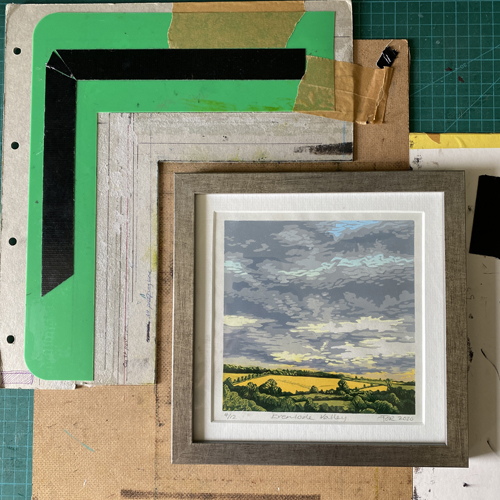
Where can we see your work? Where do you sell?
Online my Instagram account is where my prints and their process alongside other doodles and creative play are shown. In-person I’ll happily let anyone flick through my portfolio or look through the plates but this year I’m about to exhibit as part of Oxfordshire Artweeks in my home town of Charlbury (21-29th May, Venue 411). It’s the 40th anniversary this year and after all the lockdowns I really hope lots of people will come out to engage directly with artists and creators.
After that June has the Charlbury Festival where my involvement is in helping to run the day of printing with a steam roller – we’ve got some massive collaborative lino prints to do and monoprints done with my daughter’s class at school.
I don’t maintain a website but do sell my prints and the best way is to simply contact me via Instagram.
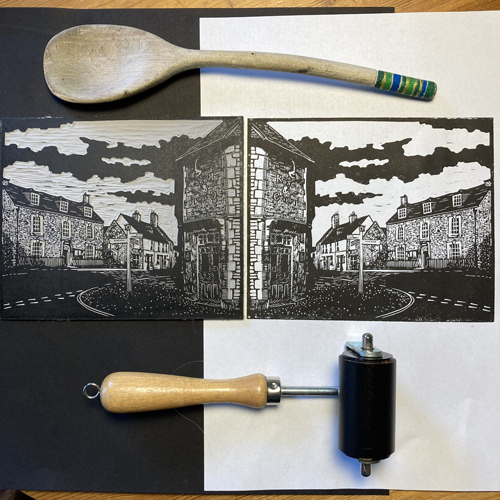
What will we be seeing from you next?
All my focus recently has been on getting ready for Oxfordshire Artweeks, lots to think about though lots of fun. I’ve just finished a Bristol print, with family connections in Bristol, I could do lots of prints of that city – and I’m not far off completing a very slow going reduction print of a local view… I want to do some prints based on a recent holiday to Devon, and for ages, I’ve had a triptych in my head inspired by the song ‘A Place Called England’ – the version I like best is by The Young’Uns. Perhaps that will be next actually, it’s been in my head for probably years, about time to get it out and onto paper.
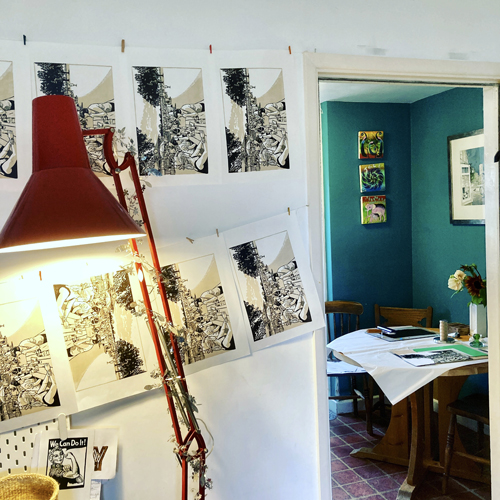
Do you have any advice for other printmakers and creatives?
I guess my biggest advice is that a creative life doesn’t have to come with a studio and days of free time. Try hard not to think ‘Oh I don’t have time, it must take ages’. It really doesn’t have to. Yes, there’s a lot to think carefully about in bringing a print, or any project, to life, but if you can recognise and take back the five minutes here and ten minutes there you can bring huge amounts of creative space into your life.
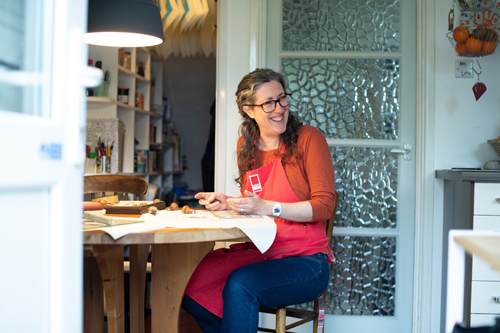
I give grateful thanks to my friend and fellow artist with a camera, Edmund Blok who came to photograph me at work for this.
To see more from Jody make sure to follow her on Instagram.
